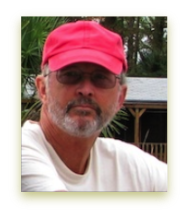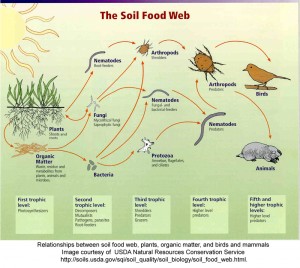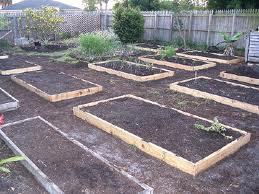The first steps towards developing a garden–especially if you’re new to the concept–can be quite daunting. If your time is precious and you can’t put triple digit hours in each week and you’re not a trust fund kid, then getting someone to blueprint the green space will be ideal. Luckily, Asheville is home to a plethora of garden consultants of every persuasion from permaculture gardening to Japanese style landscaping.
Two of the best in the business are Gary Deetz and Jim Smith who both work for Earth and Spirit Design, an edible garden design and consulting company whose motto states that “nature is our guide”.
Photo from Transition Asheville
Gary’s professional gardening career began in Colorado where he learned to deal with every climate temperament for 25 years. His credentials include (from the website):
◆ Certified as a Permaculture Design Consultant and Permaculture Teacher at the Central Rocky Mountain Permaculture Institute in Colorado, site of one of the most mature forest gardens in the US
◆ Certified as a Wildlife Habitat Naturalist by the Windstar Wildlife Institute
◆ Co-founder of Pikes Peak Permaculture, a non-profit organization that provides education and resources in sustainable design, and offers workshops and Permaculture Certification courses
◆ Former Colorado Master Gardener
Jim Smith helped network the idea of organics (with like-minded farmers) in the WNC region over 30 years ago. He was a model for fledgling organic growers by having the first organic retail business at WNC Farmers market, which he operated for 15 years selling organic products and services.

Jim’s resume (from the website) also includes:
◆ Co -founder – The Organic Growers School
◆ Founding Member – Carolina Farm Stewardship Association, at one time serving on the board
◆ Former Board Member – Sustainable Agricultural yearly conference (3 years)
◆ Former Board Member – SARE-PDP ( a four year term that developed training in sustainable agriculture for extension agents in southern US).
◆ Owner – Good Earth Organics, which did business in Costa Rica for 13 years, importing organic ginger and coffee to the US
Dig It recently sat down with the Gary and Jim, and we interrogated them under a harshly lit swinging lamp until they gave us the info we desired. A lot of the questions and answers will benefit both the amateur and the geeked out gardener. Their philosophy with plants is closely tied to the way they live their life and how they interact with the living garden.
Dig It: Why are microbes such an essential part to the fabric of the soil?
Jim Smith: Basically, microbes are companions to your root systems. When roots develop in the soil they send out sugars that signals bacteria to come and protect the roots from predatory fungi.
Gary Deetz: Without the microbes we wouldn’t have the soil. You could say they micro-manage the soil (laughter).
JS: Excrement and dead matter is broken down into soil which creates nutrient availability for the plant.
GD: This is part of what’s called the soil-food-web.

Photo courtesy of the USDA Natural Resources Conservation Service
JS: Fungi extends the root system twenty fold. Fungi will go out in search of nutrients, connect with them, and send it back to the plant.
GD: Centuries ago in this country, the forest stretched undisturbed from East to West. It was all connected by fungi.
Dig It: If someone with no gardening experience comes to you and wants to put in some raised beds, what steps do you guide them through?
Gary Deetz: Do some initial prep: Determine the size you need for the area you have to work with. Loosen the base soil with a garden fork or broadfork to a depth of at least 12”. If you’re going over grass, put down a layer of heavy cardboard over the grass before you fill the bed with a good planting mix.
Dig It: Could you use raw compost for the intial layer?
GD: If you’re talking about raw manure, I would only use raw compost to prep the soil. Don’t plant into it until it’s aged. Finished compost on the other hand, is ready to use right away.
JS: Someone who is inexperienced should go with raised beds. Basically, you want people to be successful. You don’t want it to be hard at the get go and then get discouraged.
GD: There’s a lot less weeding involved. Also, your soil is nice and loose and you can squeeze a lot of plants into a smaller space compared to a tilled garden. The soil in raised beds also warms up sooner for earlier plantings.
GD: For your wooden enclosures, I would recommend either locust or cedar. The only setback here is that it’s expensive wood.
JS: Make sure they are all untreated. Locust will last your lifetime and beyond.
To be continued.
Next up, Gary and Jim talk sheet mulching, biodynamics and a 15 round bout matching square foot gardening vs. tilled gardening!



Manthri says
Hi, I have a question, and hope you can help me – I’m creating a new garden and want to know if I should do the plantings first or the edging of the bed. It is going to be in the middle of my lawn.
Thanks,
Manthri.
ashley says
It’s better to do the edging first so that you don’t risk damaging the plants while you’re installing it.